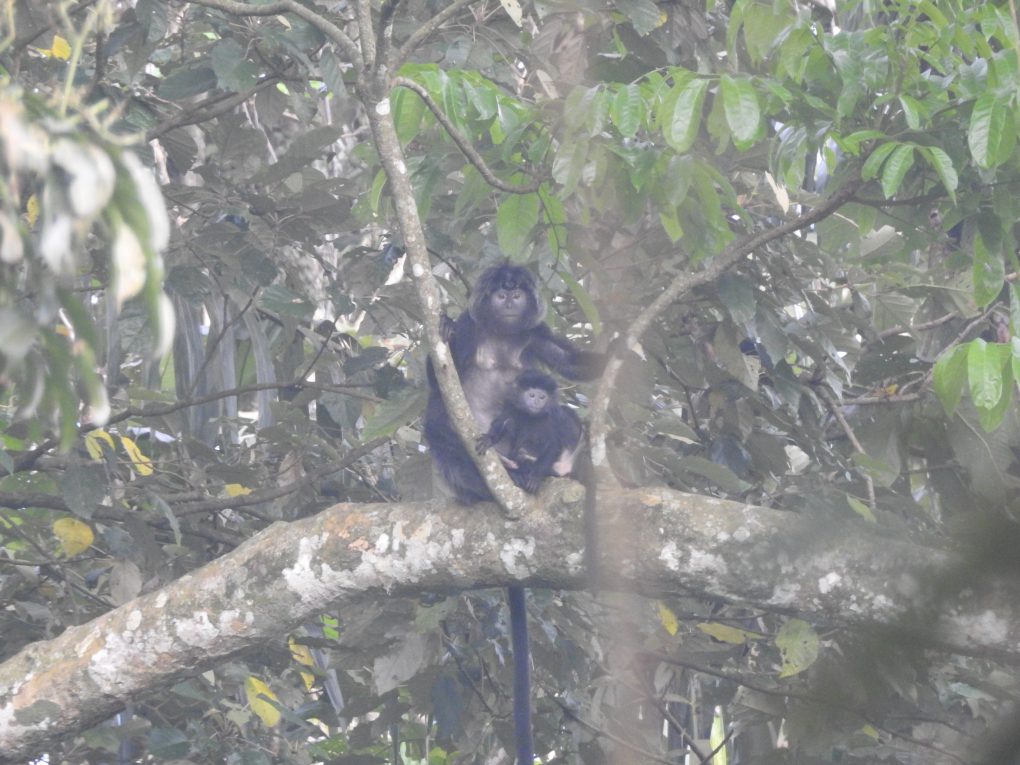By : Intan Rachmadanti Al-Huda
I am students of forestry, University of sebelas maret Surakarta, I received swaraowa’s scholarship program to conduct research on Javan lutung. Here I wrote my story from the field during my study. Field work observations were conducted from May to June 2023, we observed the population and distribution of Javan lutung in the Sokokembang forest, Petungkriyono, Pekalongan.
Javan lutung (Trachypithecus auratus) is an endemic animal to the islands of Java and Bali whose population has decreased in the last 36 years. Javan lutung are protected primates listed in Indonesia law. Based on the International Union for Conservation of Nature and Natural Resources (IUCN) Red List 2021, the lutung is included in the Vulnerable. Meanwhile, according to CITES (Convention on International Trade in Endangered Species of Wild Fauna and Flora), the lutung is included in the Appendix II category. We made observations in the morning and evening during the active hours of the lutung. During our observations, we observed 11 groups with a total of approximately 100 individuals spread across the Sokokembang forest.
Not only the lutung, we also found other species during our observations. Rekrekan , the leaf eating monkey (Presbytis fredericae), Javan gibbon (Hylobates moloch), and long-tailed mocaque (Macaca fascicularis) are primates other that we found in the Sokokembang forest. Apart from primates, there are also several other wildlife such as the Javan hawk eagle (Nisaetus bartelsi), wreathed hornbill (Rycticeros undulatus), wild boar (Sus scrofa), and deer (Muntiacus muntjak). While observing the Javan lutung, we also found footprints of a mammal which is thought to be a Javan leopard (Panthera pardus melas).
Each group of lutung generally consists of adults, juveniles and infants. Newly born have orange hairs which is very different from adult which have black hair. At the time of observation, there were several individual orange babies that were in their mother’s arms. Apart from that, there were also young individuals that had changed color to black which were also observed with their mothers. In this observation, it was discovered that the number of adult individuals dominated the age structure of Javan lutung in the Sokokembang forest.
Javan lutung groups are uni-group (one male and multi female), that is, there is only one adult male individual who dominates and has the responsible of being the group leader who must supervise, protect and ensure that the group members are safe. Therefore, the Javan lutung is a polygamous primates because the number of females is greater than the number of males in one group. Based on our observations, Javan lutung in the Sokokembang forest consist of 3 to 23 individuals in each group. This happens because of differences in the regeneration abilities of each individual and the presence of different predators in each Javan lutung range in the Sokokembang forest. Javan langur is an arboreal primate that spends almost its entire life active in trees. Starting from eating activities to resting activities are also carried out on trees. We also observed Javanese langurs carrying out grooming activities on trees. Grooming is the activity of looking for and removing dirt or parasites from the surface of the skin and hair.


